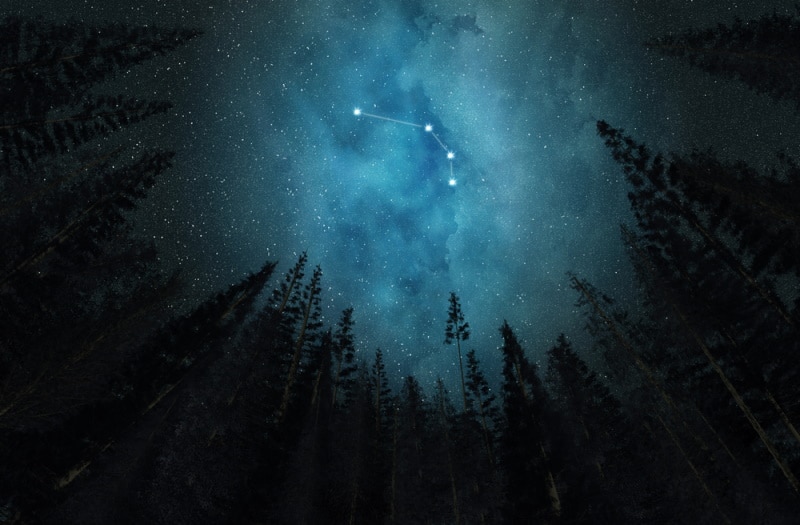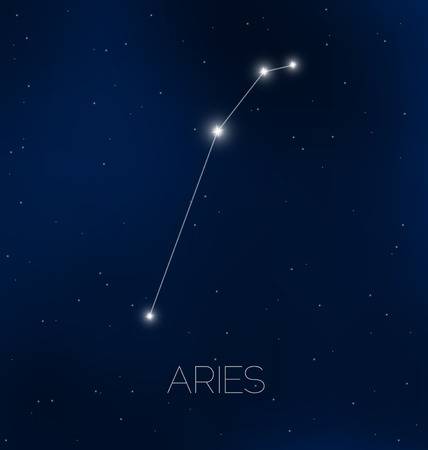7 Interesting Aries Constellation Facts to Know in 2024!
Last Updated on

When we look at the night sky, we see the seemingly infinite number of stars that make up our galaxy. The many constellations civilization has created are a great way to identify and learn more about our galactic neighbors. Aries is a well-known constellation with a lot of fascinating things to know about.
That’s why we’ve put together a list of 7 interesting Aries constellation facts. Let’s fly through space and see what’s out there!

Top 7 Aries Constellation Facts:
1. Aries Is Comprised of Many Stars
In the Aries constellation, there are six major stars: Arietis, Bharani, Botein, Hamal, Mesarthim, and Sheratan. There are dozens of stars that are designated to the Bayer and Flamsteed designations too. However, naming all of the stars that make up this entire constellation would be a difficult task, as there are so many to identify. Though, the ones we’ve mentioned have at least one orbiting planet.
2. The Brightest Star in the Aries Constellation

Now you know how many stars there are in Aries, but what’s the brightest star in the Aries constellation? Well, that title would go to the star Hamal, also known as Alpha Arietis. Hamal was named after the Arabic phrase for lamb. The brightest star in Aries is an orange giant with an apparent magnitude of 1.98, but the crazy thing is that it’s twice the size of our Sun!
3. Aries Has Different Origins
In Latin, Aries means “ram”, which is what the constellation is illustrated as in the sky. Even in ancient Egypt, Aries was named after their god Amon-Ra, a man with the head of a ram. On the other hand, in Arabic, it actually means “the two signs”. Regardless, Aries was only declared an official constellation in the 1900s by the International Astronomical Union (IAU).
4. The Golden Fleece
In Greek mythology, the story goes that Aries, the golden ram, saved two siblings, Helle and Phrixus, by taking them to the land of Colchis. According to the lore, Helle and Phrixus were the descendants of King Athamas, who had a jealous second wife that set out to kill her husband’s children. However, in her attempt, Aries rescued Phrixus from a sacrifice that was thought to cure famine across the land, despite it being conjured by King Athamas’ new wife.
5. It Has Galaxies
Inside the confines of the Aries region are several distant galaxies. There’s a dwarf irregular galaxy called NGC 1156, which is located northwest of Botein (Delta Arietis), and it’s filled with rotating gasses. Another deep sky wonder in Aries is the spiral NGC 772 galaxy, which is 130 light-years from Earth. Southeast of Sharatan, NGC 772 has an apparent magnitude of 14.2, so you’ll have to use a telescope to see it in person. There are a couple of other galaxies, too—NGC 972 and NGC 697—which are both spiral galaxies.
https://www.instagram.com/p/BjAK4Kklmjm/
6. Planets in Aries
Not only is Aries filled with galaxies, but it’s also jam-packed with extrasolar planets. Similar to the galaxies we named earlier, the names of these planets are a mouthful, so be prepared to put your memory to the test. Surrounding the HIP 14810 star, there are three planets that are much larger than Earth. The same can be said for HD 12661’s two orbiting planets, one of which is over 1.5 times bigger than Jupiter!
7. Aries Has a Ton of Meteors
In the Aries constellation, there are frequent meteor showers that occur in yearly increments. It’s known as the Daytime Arietids meteor shower, which runs from late May to the beginning of July. There’s also the Northern/Southern Daytime May Arietids and Daytime Epsilon meteor shower, which both happen during the day. But that’s not all! There are also the Autumn and Delta Arietids, which occur during fall and winter.

Conclusion
Aries has a lot of features at its core, as galaxies, planets, and many stars make up its grandeur. Not only that, but there is quite a bit of lore behind Aries, which is why it’s commonly known as one of the star signs. We hope you enjoyed checking out what makes Aries such a famous constellation, and hopefully, you will end up checking it out in the night sky for yourself!
Featured Image Credit: Roman Voloshyn, Shutterstock
About the Author Robert Sparks
Robert’s obsession with all things optical started early in life, when his optician father would bring home prototypes for Robert to play with. Nowadays, Robert is dedicated to helping others find the right optics for their needs. His hobbies include astronomy, astrophysics, and model building. Originally from Newark, NJ, he resides in Santa Fe, New Mexico, where the nighttime skies are filled with glittering stars.
Related Articles:
15 Crucial Facts About Ultraviolet Rays & the Sun
What Constellation Is Spica In? The Interesting Answer!
10 Interesting Leo Constellation Facts, Myths, and FAQs
15 Interesting Pegasus Constellation Facts, Myths, and FAQs
6 Interesting Sagittarius Constellation Facts, Myths, and FAQs in 2024!
What Are Constellations? Where Did They Come From?
8 Interesting Libra Constellation Facts, Myths, and FAQs
What Is Infrared Radiation? Science-Based Facts & FAQ
